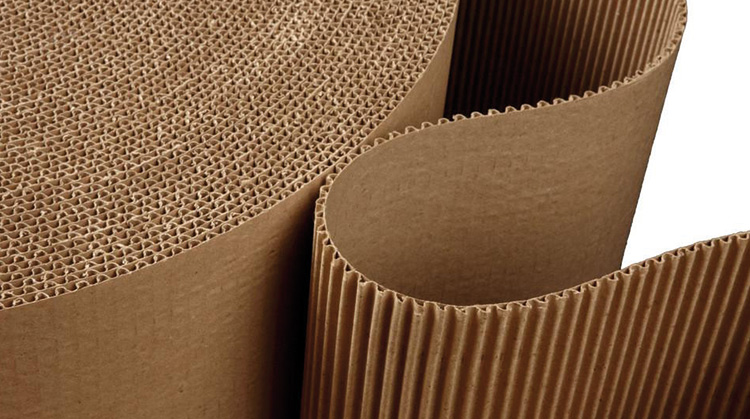Cellulose packaging – Data 2017
Paper packaging is characterized by wide use in virtually every manufacturing sector, both as primary and as secondary packaging. It is especially important as transport and accessory packaging (labeling, protective material). Data and facts on the sector in Italy. Barbara Iascone
** NOTE Primarily paper rigid laminated containers are examined in a separate chapter of Imballaggio in Cifre, but here they are considered as part of the cellulose packaging category.

According to the most recent Eurostat data, referring to 2017, the paper converting industry (which includes the packaging segment) of the EU-28 logged a turnover of some 103.7 billion euro and is made up of approximately 17,500 enterprises, employing 483,400 people. European production grew by 2.7% in 2017, while turnover grew by 4.2%. The top five countries by turnover share continue to be Germany, Italy, the United Kingdom, France and Spain (the UK overtook France in 2017). As things stand, Italy holds an important position in Europe, as its second largest producer of corrugated cardboard and printed packaging.
Cellulose packaging in Italy
According to the classification of “Imballaggio in cifre” – a volume published by Istituto Italiano Imballaggio each year as a snapshot of the Italian packaging sector – paper packaging can be subdivided into the following:
- corrugated cardboard sheets and containers (including displays);
- folding board boxes and cases
- large format paper bags;
- other (cellulose drums, tubes, wrapping paper, small bags and shoppers, labels, paper supports for fabric and apparel, etc.);
- primarily paper rigid laminated containers**.
In 2017, cellulose packaging represented 32.6% of all packaging produced (by t). According to numbers calculated by Istituto Italiano Imballaggio for the 2018 edition of “Imballaggio in cifre”, a total of 5,310,000 t of empty packaging were produced in Italy during the past year (including primarily paper rigid laminated containers), a 2.2% rise over 2016. Exports grew by 1.9% and imports by 1%, with apparent use at around 4,858,000 (+2.2% compared to the previous year.
Corrugated cardboard packaging
Corrugated cardboard represents 71% of cellulose packaging, with a 2017 production reaching 3,791,000 t (+1.9% compared to 2016). Corrugated cardboard is primarily used as transport packaging, and it is thanks to this use that this type has seen constant growth in recent years. The positive input of online commerce continues. According to a Netcomm study, in 2017, more than 150,000 more orders were confirmed than in 2016, and that includes only goods sold over the Internet (excluding services).
Foreign trade saw a -6% decline in imports and a +5.8% rise in exports, bringing apparent use to +1.5%.
According to analysis of sectors monitored by the III Database, 60% of corrugated cardboard is used in the food sector (food + beverage + fresh fruit and vegetables), while the remaining 40% is used in furniture (13%) and the non-food sector, which is to say chemicals, electronics, construction, etc. (27%).
Folding board boxes and cases
This material is used primarily to produce folding cases (83%) and boxes (17%).
Folding cases can be 100% board or laminated with PE film or aluminium foil. Lamination with plastic or aluminium film is generally necessary in order to confer an appealing look, such as in the cosmetic sector, or to respond to specific requirements having to do with the packaging’s use.
In 2017, production amounted to 783 t/000 (+1.8% compared to the previous year). As far as concerns use, folding cases and folding board boxes are distributed as follows: 45% food, 18.8% beverage (mainly clusters), 10% cosmetics and pharmaceuticals, 26.2% other non-food.
The primary users of folding board boxes include the footwear, leather and clothing sectors.
Large format paper bags
In 2017, this category saw a production of 195,000 t (-4.3%). Apparent use showed excellent performance (+6%), sustained by a more than 30% increase in imports. Exports grew by 1.5%.
Construction remains the primary target sector for this category of packaging (64.2%); foods such as rice, flour, coffee and legumes use 15.7%, followed by animal feeds (with a 9.1% share) and “other” (11%).

Other packaging categories
Other cellulose packaging types include cellulose drums and tubes for packaging bottles, cardboard tubes for use in the home, wrapping paper, parchment paper and sulfite wrapping paper, corrugated paper, small bags, shoppers, automatic wrapping, paper sheets for clothing, labels, folding board and paperboard displays, and so on.
It is estimated that, in 2017, total production of this category reached 402 t/000, a 4.2% rise over that of 2016. Foreign trade also performed well: +9.7% imports, +4.9% exports. Apparent use grew by +6%.
Primarily paper rigid laminated containers
This type of packaging is used primarily in the beverage sector, but also finds uses in the food sector, particularly in packaging preserved foods.
In recent years, what is commonly known as brick packaging has been going through a slump, with steady production and turnover.
The former has remained stable at 139 t/000 since 2015, while turnover has leveled off at 470 million euro.
RECYCLING CELLULOSE PACKAGING According to Comieco numbers, some 4,886 t/000 of cellulose packaging waste was recycled in 2017 (+3.6% over 2016). That consortium estimates that, over the next two years, that share will rise by +2.9% in 2018 and +1.9% in 2019. The amount recycled is growing slowly but steadily, in line with production and projections of increasing separate collection in central and southern Italy.
RAW MATERIAL PRICES FOR CELLULOSE PACKAGING
Istituto Italiano Imballaggio monitors the index prices of raw materials used to produce packaging on a monthly basis. In 2017, all index prices for raw materials used to produce paper packaging were on the rise. In some cases, the increases were absorbed without affecting the price of the finished packaging. In other cases, this was not possible. The trend is driven by corrugated cardboard, with average growth of 7% (2017 over 2016), followed by pulp paper, with an average of 7% growth, as with paper used to produce large format bags.
Barbara Iascone
Istituto Italiano Imballaggio




















